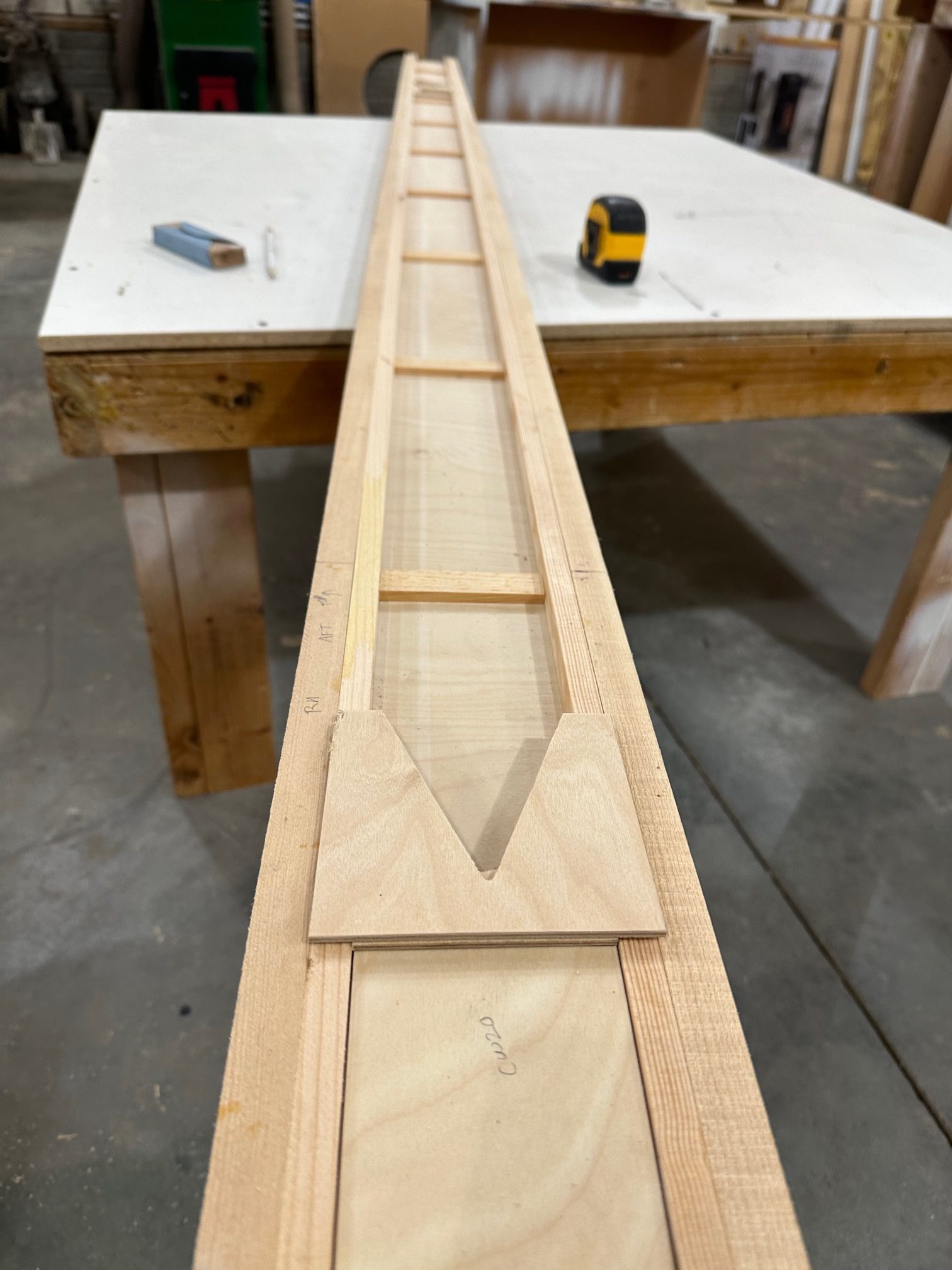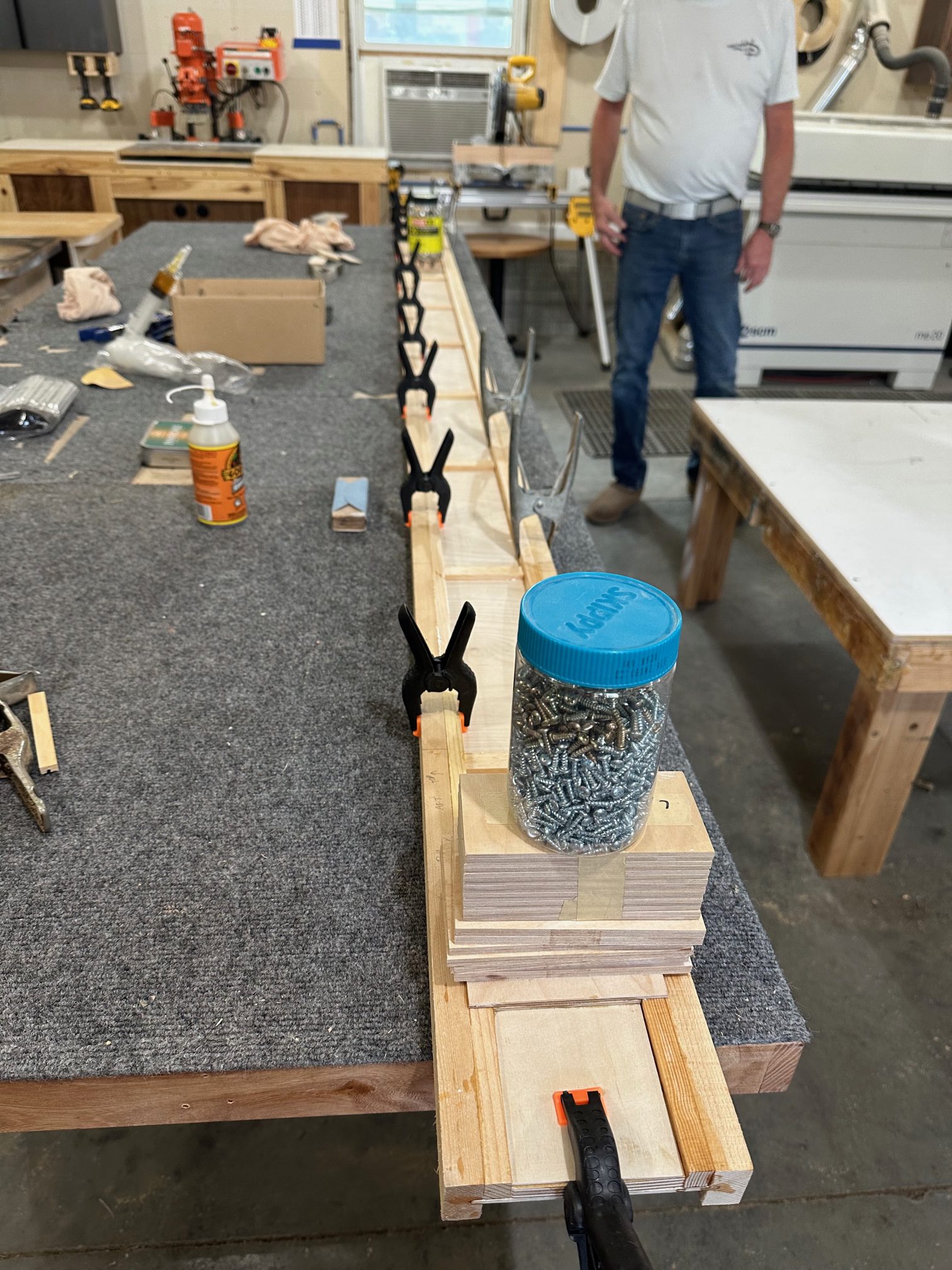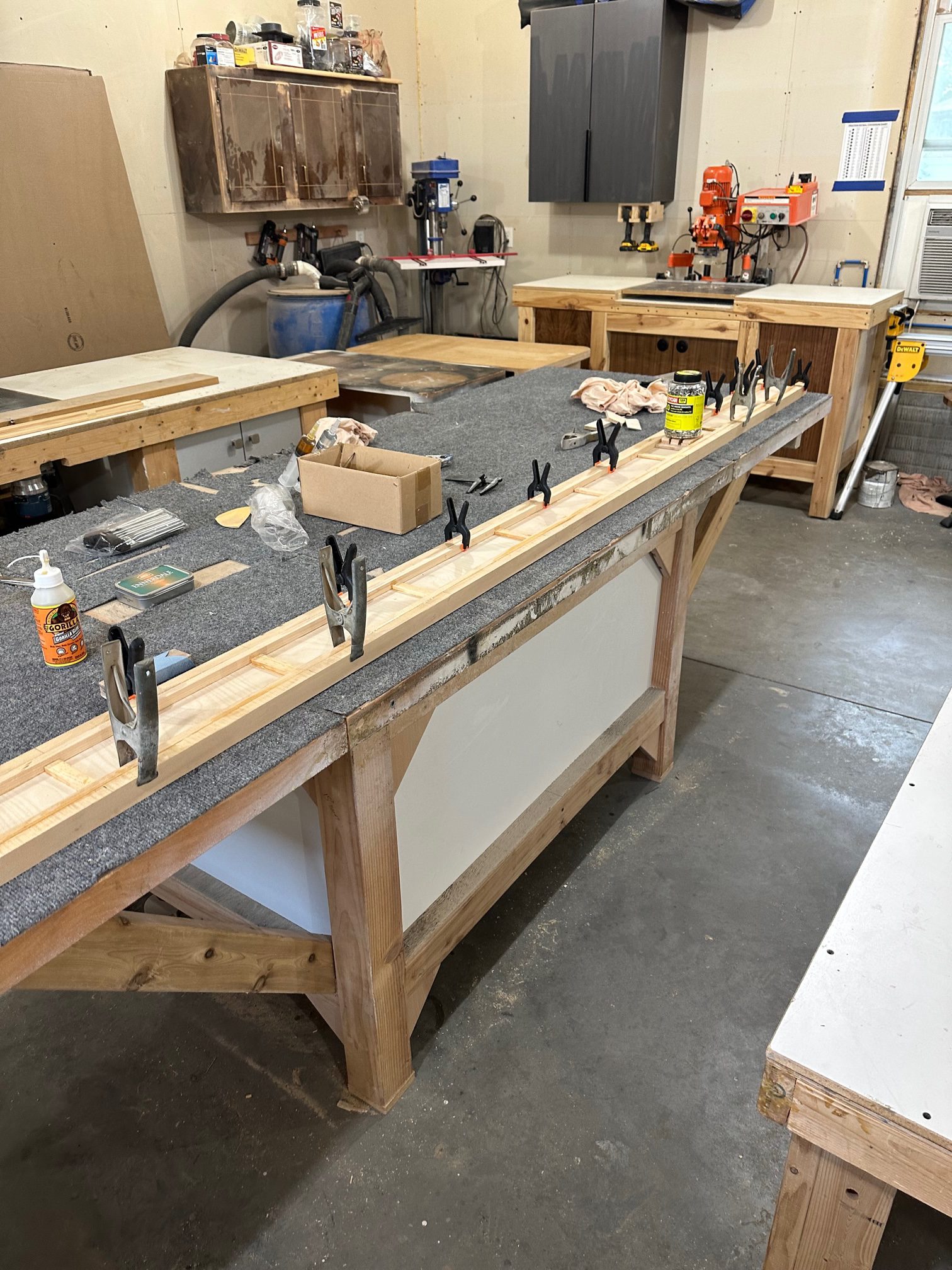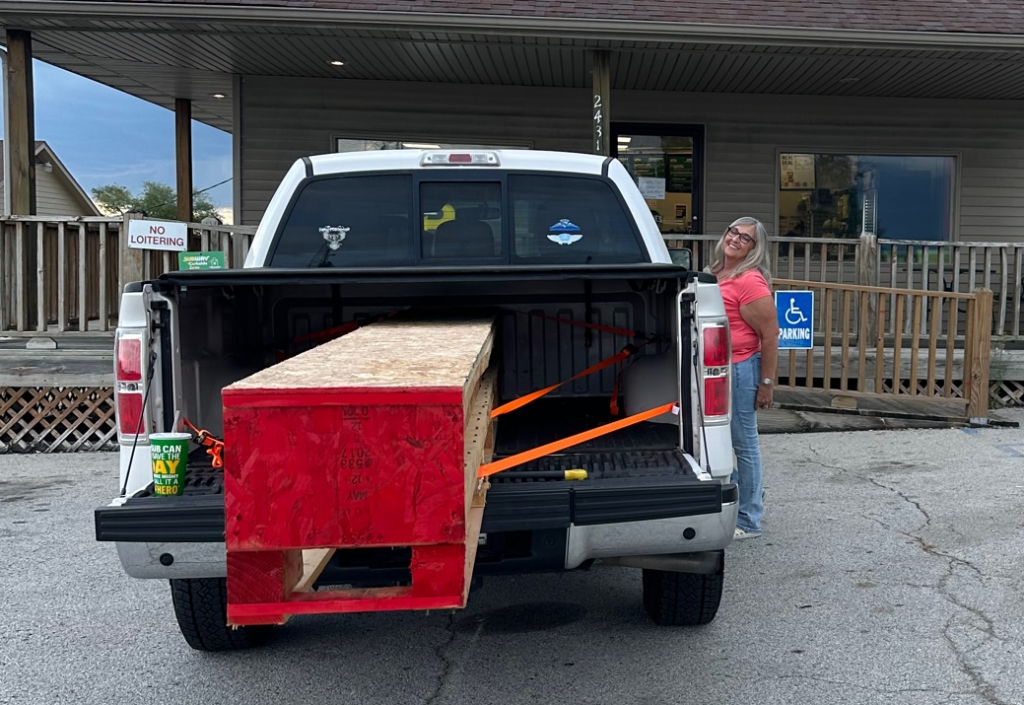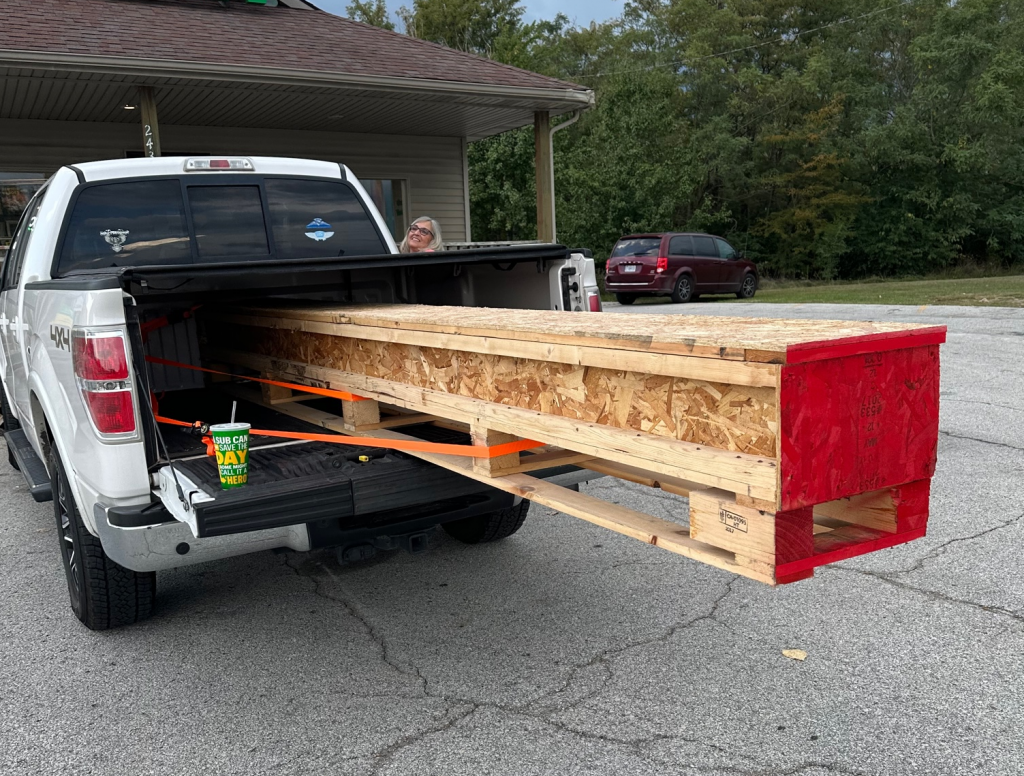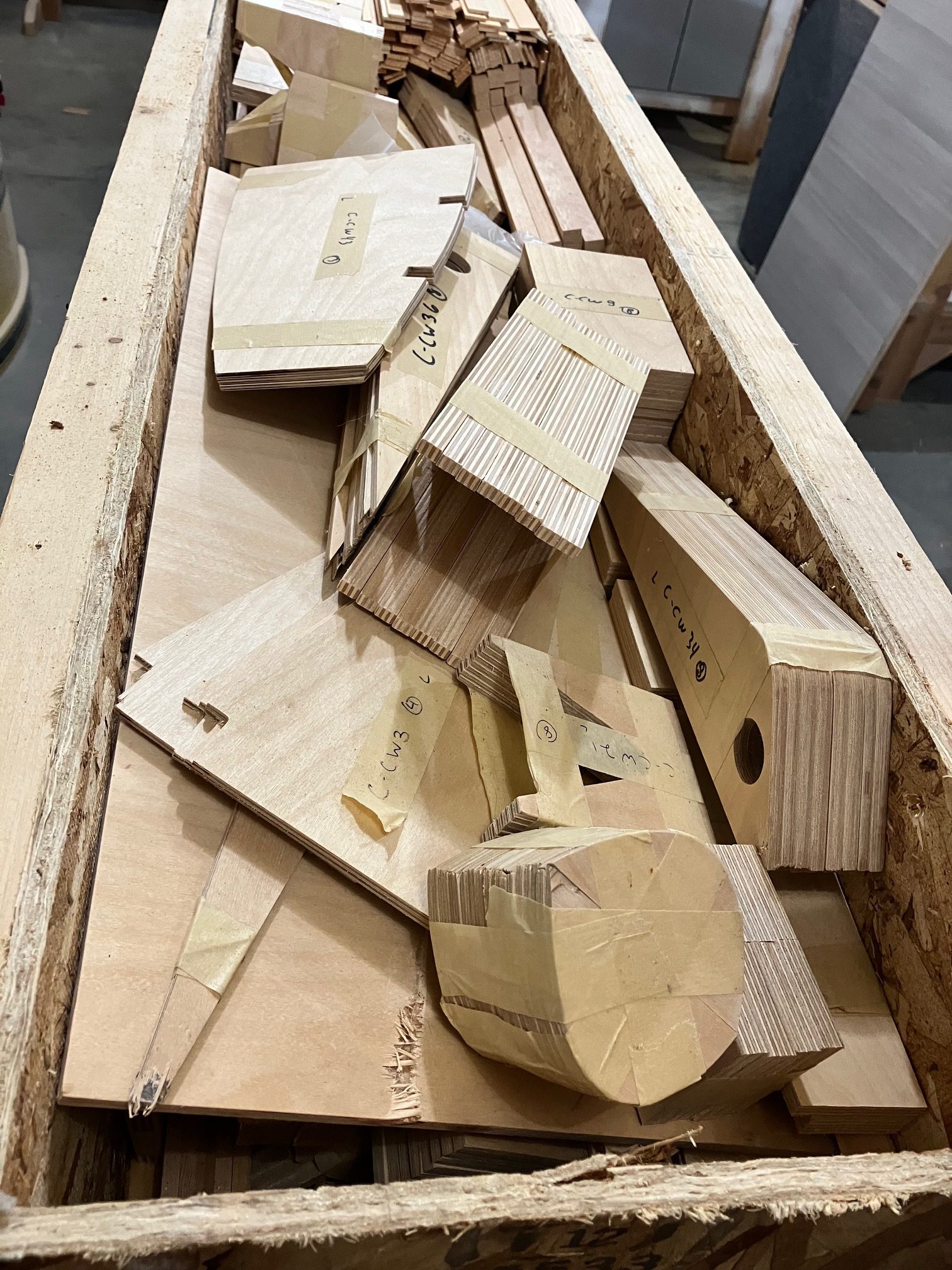This morning I went over to Stu’s and finished gluing the root attach blocks and the blocks for the N strut and flying wire brackets to the spar. Other than the tapered extension for the wing tip bow, that’s all of the wood for the first spar. Once the glue is cured, I can start locating and drilling the holes for the attachment bolts and bushings.
With that done, Stu and I started on the second upper wing spar. The bench has threaded inserts set into the edge, and he’s got a long steel rail that bolts on. It’s 2 x 2 inch square steel tubing with mounting brackets welded on. The rails were designed and built to bolt to the table, then he’s got a steel sled that sits on them that he can use to flatten a large wood slab using a router. We bolted one rail to the edge of the table, overhanging the work surface. Now there’s a long work bench with a straight, level steel rail on one edge.
We glued the groove in the spar cap, inserted the plywood web, then glued the other spar cap. One spar cap is clamped against the rail, then the assembly is clamped in place to hold it straight, flat, and properly spaced at 5-3/4″ total spar height along its entire length.
I think about 10 ml of epoxy is plenty to glue one spar cap groove. I mixed two batches today. I’ve been using 60 ml syringes ordered from Amazon to hold and measure the glue – it works wonderfully. I can very precisely measure out even very small quantities.

